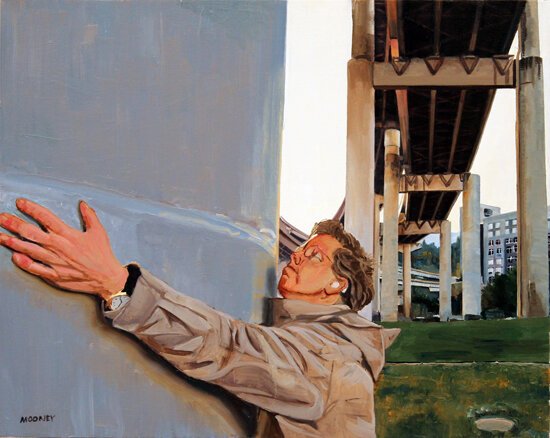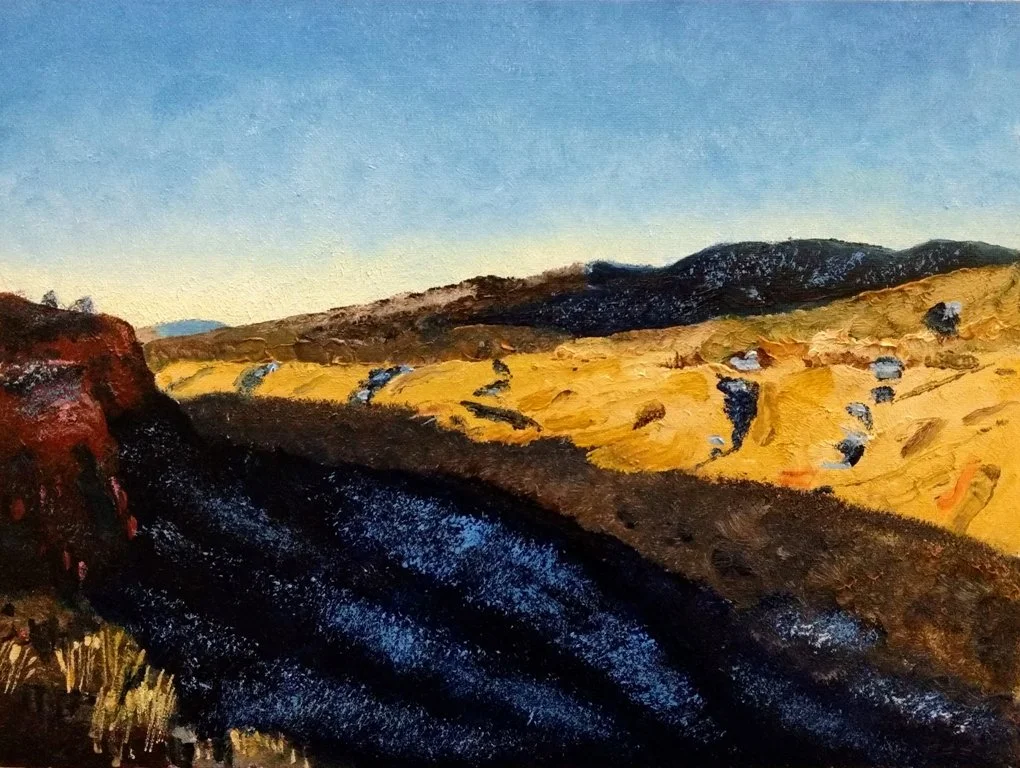Christopher Mooney
Christopher Mooney was born and raised in New York State, surrounded by an artistic family and a richly influential environment. During her first trimester of pregnancy with me, my mother contracted measles. As a result, I was born without hearing. I neither heard nor spoke until I was about four years old, though today I wear corrective devices and speak well. When one is deprived of one sense from an early age, the other senses compensate by growing stronger. In my case, it was my eyes. They taught me everything I knew about the world I had been born into. My sight continues to be my dominant sense, the only truly reliable way I have to perceive my world and the heightened sense that informs my work. I work very hard for my paintings to convey to the viewer the strength and the beauty that I see.
I’ve long revered the work of such artists as Edward Hopper, Charles Sheeler, Charles Demuth, John Sloan, and Richard Diebenkorn, who embodied the notion of illustration as a fine art. An early influence on my work was our neighbor, the American artist Joseph Golinkin, winner of the first Olympic Gold Medal for Art (1948). He was very kind, allowing me to tag along to his studio whenever my parents visited his home. It was from Joe that I learned what an artist studio looks like, with supplies everywhere, and to observe the creative process he shared with my parents. I loved his studio with its large windows and northern lighting, and I can still smell the oil and see in my mind’s eye his beautiful paintings resting on their easels.
self portrait
Living in Portland, Oregon for most of my adult years, I have established a niche in the art community as a painter of contemporary realism. A significant body of my work showcases Oregon's diverse architectural styles, especially her bridges. My technique mimics the old masters but embraces a contemporary sensibility and ambience through careful and expressive brushstrokes. The rivers and bridges of Portland are crucial to the city's character and function, and they provide a great source of inspiration. Bridges frame our landscape and create vital connection and commerce between communities. I am fascinated by the complex steel girders and geometric shapes that underpin the majesty of bridges. These bridges compel us to just stop and look, to be still in the moment and breathe in the ingenuity of a grand structure. I enjoy building dramatic perspectives in my paintings of the bridges, and I strive to deliver unusual points of view that render exciting realistic and abstract portrayals. I am also well-regarded for my portraiture, images of working heroes, and figurative work stylistically depicted in modern realism.
I enjoy hiking and walking around cities, carrying my camera for photo references. I step off the sidewalks to get a different perspective of the city and its bridges, with the intention to discover a new dimension in my work. The strength of my large-scale oils lies in the way they are abstract and realistic at the same time -- illustrating the steel girders in compositional perspective, capturing the transition with the landscape and cityscapes. This is an experience of personal significance to me every time, a turning point, describing a dynamic industrial environment that is still in close contact with a natural environment. My work enables me to document buildings and structures that might otherwise go unnoticed and forgotten.
Observing other accomplished artists and their techniques, and receiving their critiques, motivates and prepares me to broaden my outlook and to see my world more clearly and more fully.
A well-done painting, completed in a timely manner, with patient execution and methodical technique is an inspiration. I derive great personal joy knowing that Charles Sheeler, Edward Hopper and Charles Demuth were painting just these kinds of subjects.










